
How to behave on a Swiss train
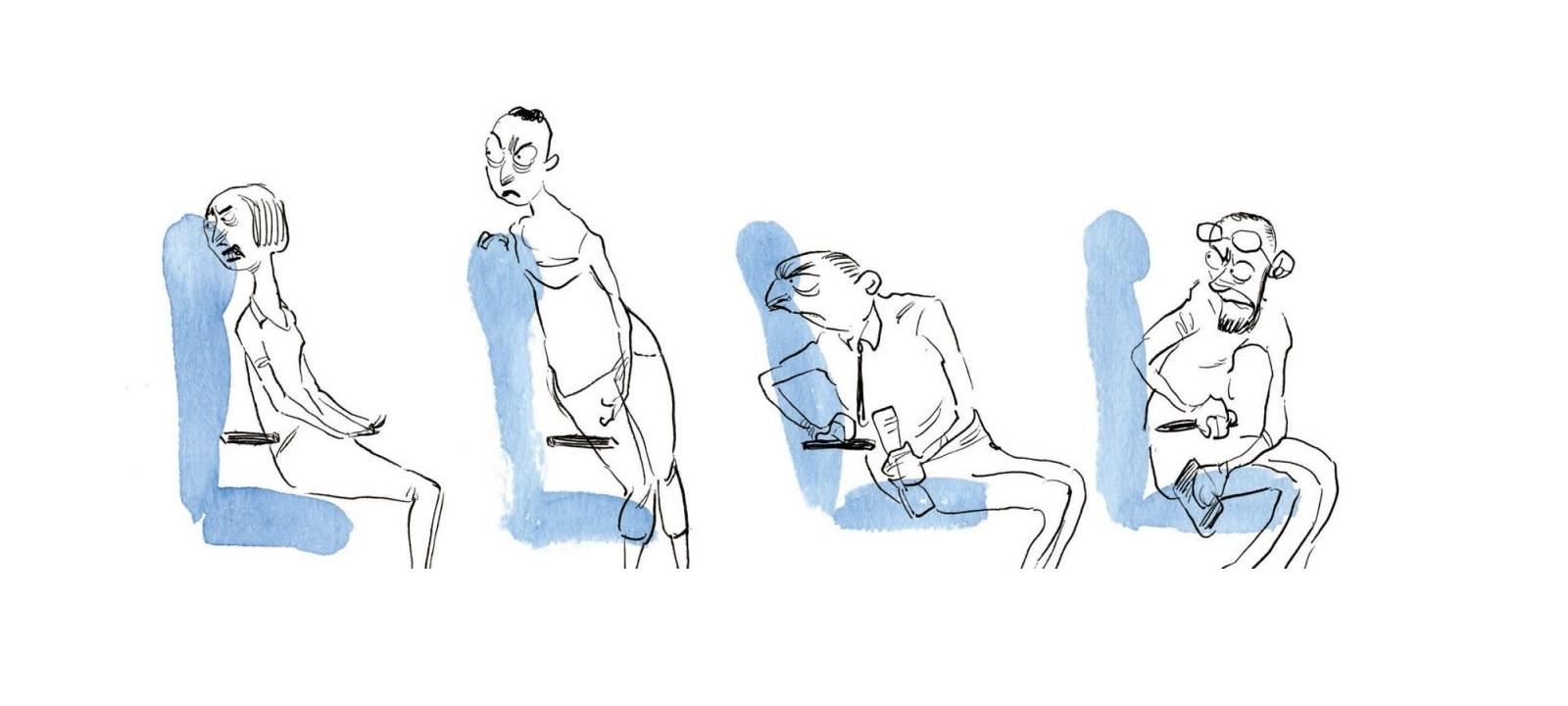
Jump on, ride to your stop, hop off — without offending anybody. Sounds easy, but it’s not, a guru of Swiss transport etiquette told me as we rode the rails together.
Franziska von Grünigen — whose pen name is Katja Walder — spent a decade writing a newspaper column about awkward situations she’d observed as a commuter in Switzerland. She’s among the four million travelling an average of 15km (9 miles) door-to-door for work, 31% of them by public transport. More recently, she’s published a 180-page rule bookExternal link with cartoons by Daniel Müller showing top examples of people behaving badly aboard public transport.

“Problems start when someone feels too much at home,” she says. “Somehow the train is a hybrid zone between home and the destination.” This manifests itself in people doing things that are certain to annoy someone.
By the time she and I meet at Zurich’s main train station, I’ve already committed a few commuter crimes — at least in some people’s eyes. I hung my jacket above the opposite seat. My breakfast muffin came in a rustling paper bag. I even put on hand cream.
“Watching someone rubbing her hands together or applying a full face of make-up is too intimate. There’s nowhere to go — you can’t escape if you’re sitting across from the person,” von Grünigen points out. “The grossest things are clipping fingernails, nose picking or oral hygiene,” she says, citing the time she saw a woman remove her dentures, pick out some gunk with a toothpick, and wipe her fingers on the seat.
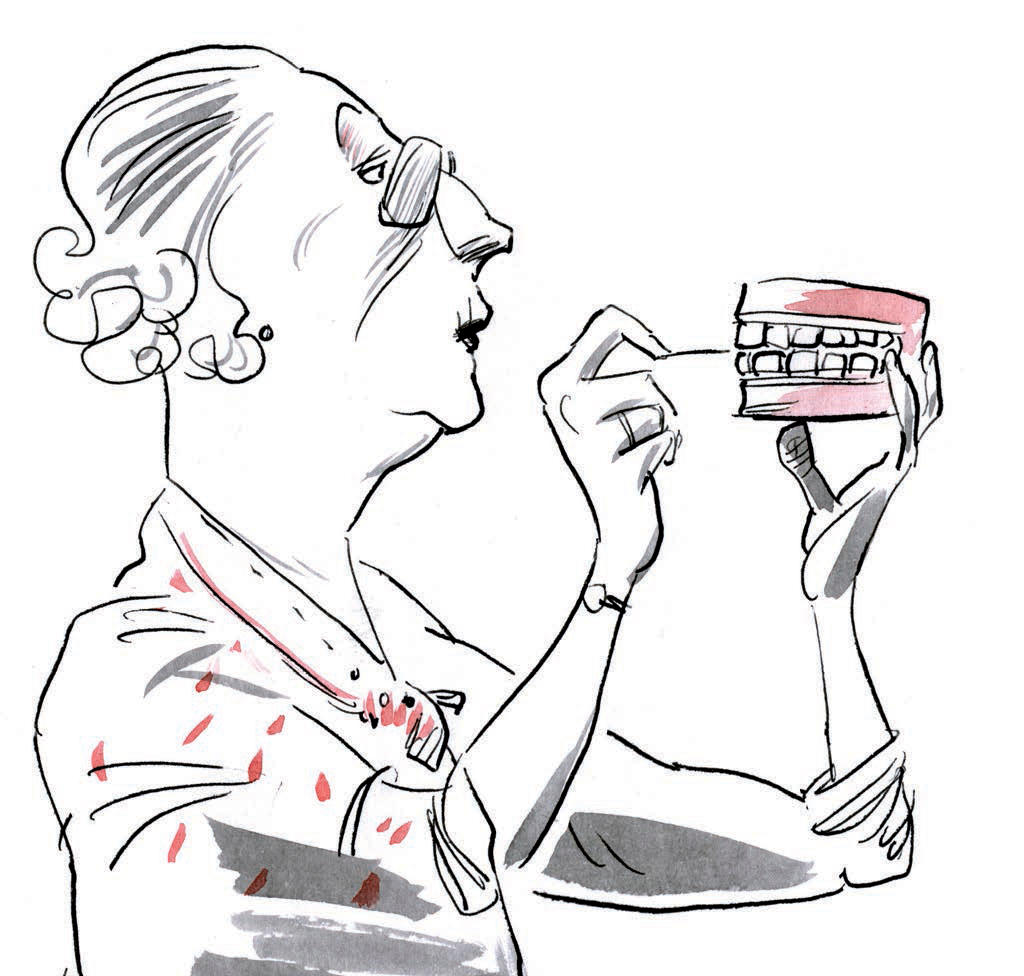
Wary of what we might find, we board a train to Winterthur, a city of about 110,000 northeast of Zurich, with connections to the Swiss financial capital every few minutes. It being late morning, we pass many empty seats in pursuit of a whole four-seat section just for us.
“It’s an unwritten Swiss rule. Don’t sit with someone if there’s room in another section,” she says as we settle into our seats. We both go for the window, our bags in the aisle seats beside us, our knees quite close since we’re opposite each other. Would this be okay with a stranger?
“No, you should sit diagonally, space permitting. But the window seats are very popular,” von Grünigen acknowledges. Of course if it’s a busy time of day, then every empty seat is fair game and should be filled.
Which brings us to the next Swiss rule: Always ask whether it’s okay to sit down.
“For me it’s a question of manners,” she points out. But be careful of misunderstandings. In German, for example, the question to ask is, “Is this seat free?” and not, “Is this seat taken?” For the shy or linguistically uncertain, von Grünigen recommends eye contact and a simple smile to acknowledge the other passenger, who can then say whether a companion happens to be in the restroom.
Swiss Federal RailwaysExternal link — for whom von Grünigen now writes a blogExternal link — agrees that asking to sit is good manners, especially on long-distance trains.
“But on the S-Bahn [local trains], where many passengers travel for only a few minutes, it’s a bit less common nowadays. Instead, people just sit down,” says spokesman Reto Schärli, noting that the Federal Railways transports 1.25 million people per day.
“Every bit of communication is good,” says von Grünigen. “For example, if there’s luggage crowding the place where I’d like to sit, I’ll ask if I can help stow it overhead or behind. Same for jackets. Unless it’s a really empty train, these should be close to their owners and not draped across or above the opposite seat,” she says.
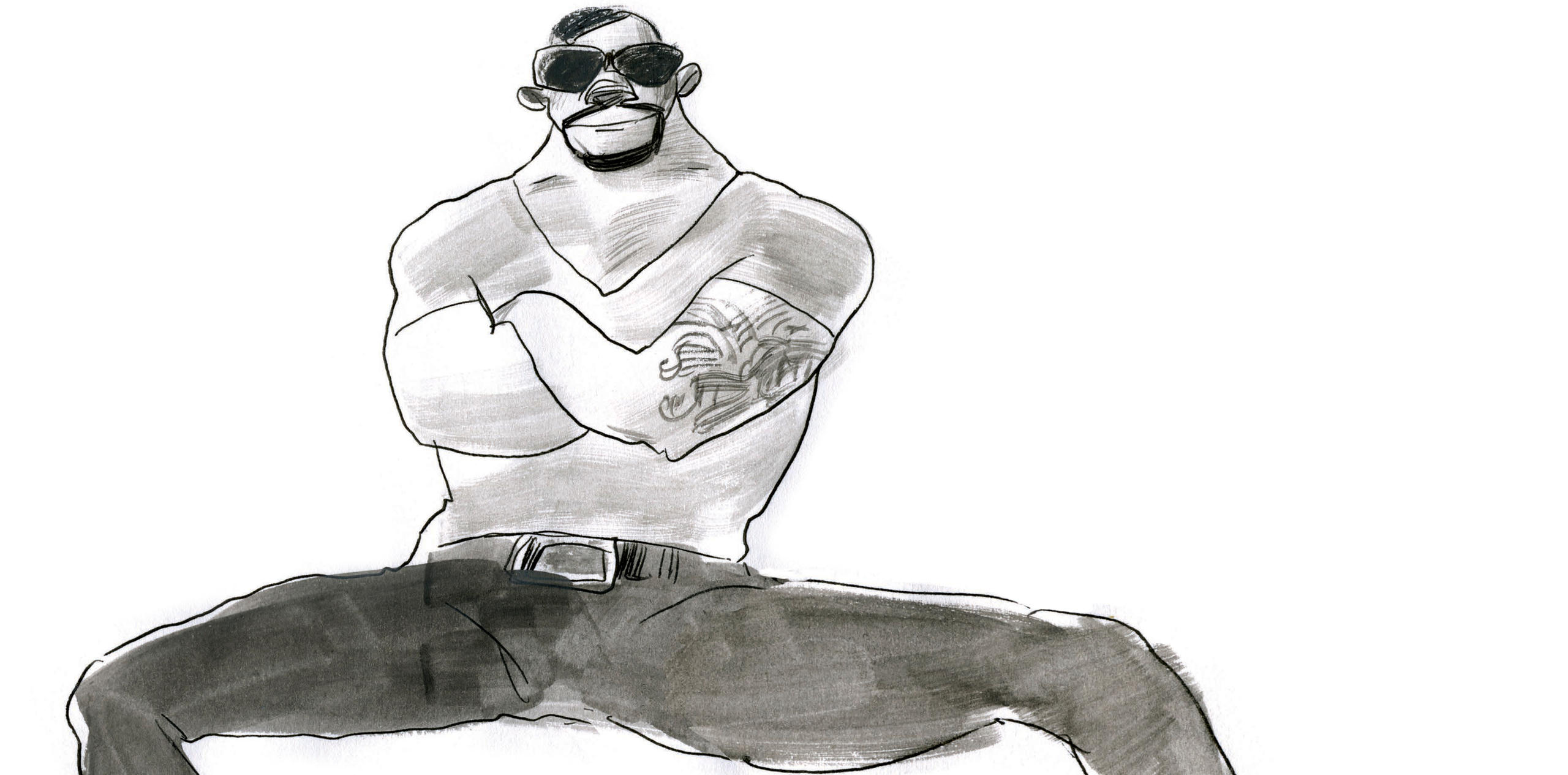
Our ride is about half an hour, and the only interaction we have is with the conductor. We arrive in Winterthur unscathed, and are able to disembark without having to fight our way through a pushy crowd. But as any Swiss rush hour veteran knows, there’s often an illogical battle between those trying to vacate the carriage and those eager to take their places.
“I have no idea why people can’t wait and let others out,” says von Grünigen, rolling her eyes. “I think there’s this fear of not getting a seat — or not the best seat.”
In its own etiquette guideExternal link, Bern tram and bus operator BERNMOBILExternal link explicitly tells passengers who gets to move first. “Whoever is disembarking has priority; this prevents any wrangling and the trip can continue swiftly.”
However, as we’re leaving the station, von Grünigen expresses impatience over a man moving slowly and uncertainly with two wheeled suitcases in tow.
“I don’t like it when people just stop and block the path,” she notes, sidestepping him with her long legs. Also unacceptable in Switzerland: standing on the left-hand side of an escalator, in the way of those who’d like to pass.
We head for a café, which brings us to the next point: food and drink. In theory, snacks and drinks are fine — and certainly a good thing from the perspective of any track-side or on-board vendors. But things get tricky if there’s a strong smell.
“If you show up with a tuna sandwich or a burger and fries, get ready to be unpopular,” says von Grünigen.
She’s not the only one who thinks so. Twitter users replying to this photo I posted listed fried onions, bananas and even coffee as too smelly for on-board consumption. Others said the on-board tray tables were designed for eating.
For an upcoming story on commuter etiquette: What do you think about people eating on the tram/bus/train? #commuterlifeExternal link pic.twitter.com/ogyESivsz0External link
— Susan Misicka (@SMisicka) February 25, 2019External link
And what does the Federal Railways say?
“You can eat and drink anything on the train,” says Schärli, with the caveat that it might provoke “eye-rolling” if the scent is too strong. He adds, “The cleaning staff are grateful if the packaging is disposed of in the large waste bins on the platforms.”
BERNMOBIL suggests that passengers “eat first and then get on board”, but it doesn’t forbid snacking.
Regarding food and drink, there’s also the audio-visual aspect, points out von Grünigen. A classic irritator in a dairy-loving nation like Switzerland? The scraping of a spoon inside a yoghurt cup. Or the sight of food eaten messily, like the salami and salmon she watched a man munching on, his fingers and mouth getting greasier by the slice.
The commuter columnist has also seen people pull out giant Tupperware bowls of salad, jars of dressing and other fixings — just like at home. “It’s problematic if people take up too much room, especially if crumbs are flying and the window is getting spritzed.”
And eating in the quiet carriage? Definitely a no-go.
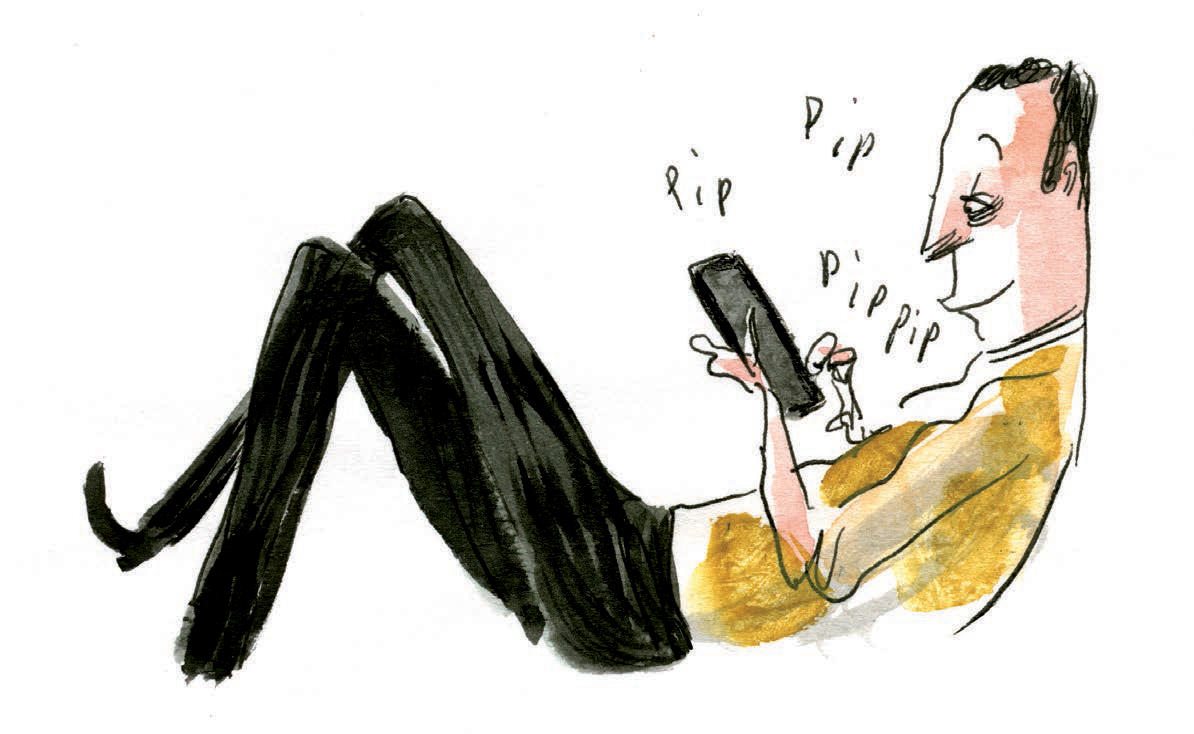
Crunching, smacking and guzzling aside, noise is another highly subjective trigger for angry glances — and not just in the quiet zone.
“You have to assume people are listening — whether they want to or not,” says von Grünigen of people on the phone, citing those acting self-important or being indiscreet as particularly annoying.
As BERNMOBIL recommends, “Phone calls on the tram or bus should be made quietly or not at all — so that private life stays private.”
Von Grünigen is also baffled by the increase in people watching videos and listening to music without headphones. “I’ve seen this across all generations. Maybe the phone is a replacement for a human companion?”
The new trains headed for Switzerland will probably bring an increase in the use of personal devices. “These trains will have additional sockets to operate or charge electronic equipment. And in some cases, it will be possible to charge mobile phones wirelessly on the tables,” says Federal Railways spokesman Schärli.
As for boisterous children, von Grünigen says parents must keep other passengers in mind.
“Taking the train should be fun,” says the mother of two pre-schoolers, who tries to find seats in the family carriage, and always brings books. “As a parent you have to have a feel for how much noise is okay.”
We then come to a subject that’s hotly debated among commuters: Feet on seats. This snapshot I posted on Twitter split opinions, with reactions ranging from “it’s normal“ to “kind of icky“.
Problematic, or perfectly OK? I'm curious how your opinions differ from that of a passenger etiquette expert. #commuterlifeExternal link pic.twitter.com/sLgHbz9NQ7External link
— Susan Misicka (@SMisicka) March 20, 2019External link
“Socks on the cushion are fine, or shoes on a newspaper,” finds von Grünigen, as long as there’s room. “What’s not okay are stinky, post-hike feet, or bare and unkempt feet.” However, she wouldn’t say anything to anybody. “There’s always someone else who will say something — usually a senior citizen.”
The Federal Railways has a zero-tolerance policy for soiling. “Anyone who dirties the upholstery with their shoes has to pay a supplement,” Schärli says.
Von Grünigen likes to put up her clean, groomed, bare feet, which, I must confess startles me. I raise my eyebrows before telling her about a weird man who — after asking me to watch his briefcase while he was in the restroom — switched seats to get closer. Then he took off his shoes, put his sock-feet on the seat beside me, and draped his coat over his legs.
Now von Grünigen raises her eyebrows and asks me, “What did you do?”
“I told him, ‘Oh no — I’m not comfortable with that!’ and he went back to his previous seat.” She nods appreciatively.
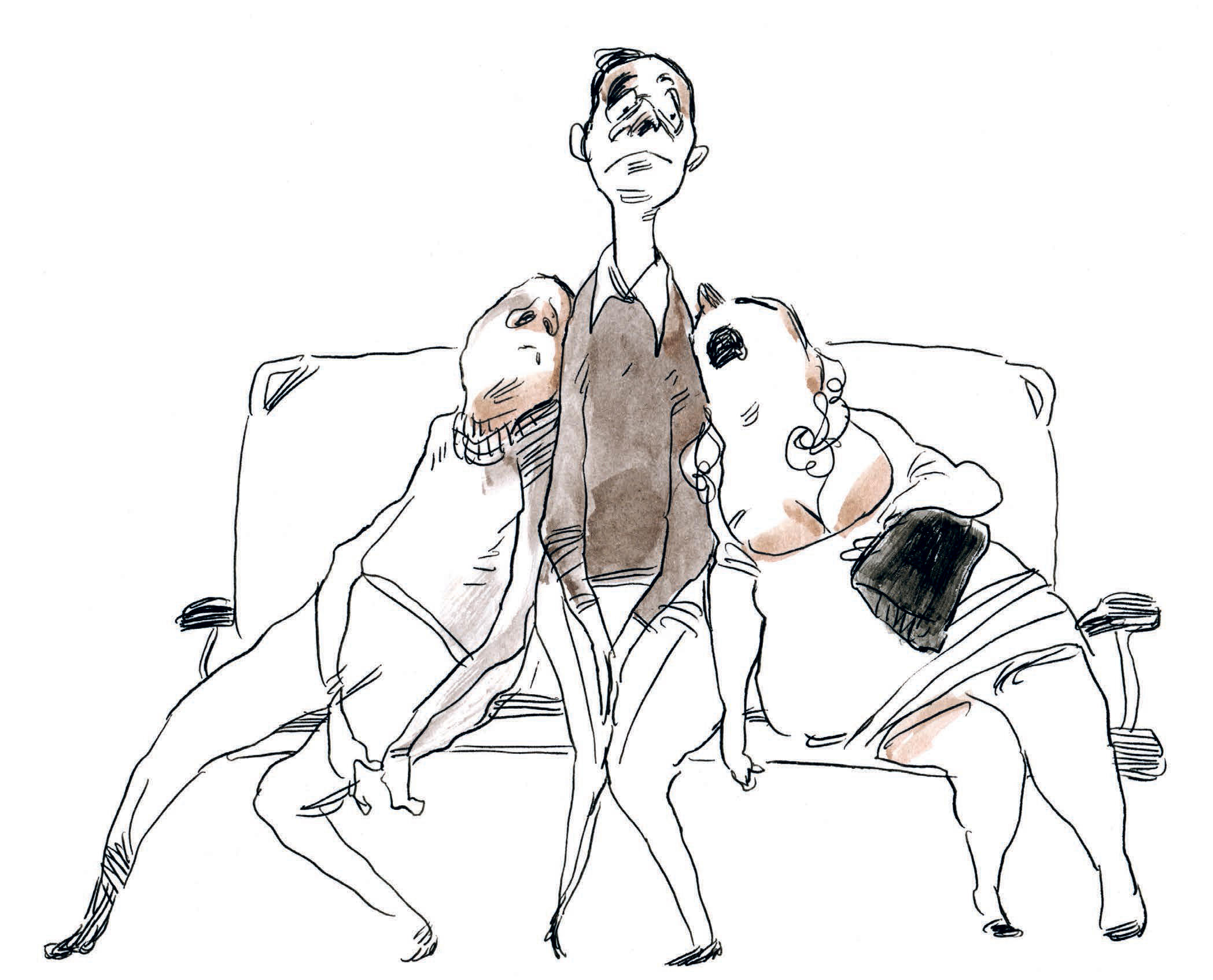
“I’ve got civil courage. I’ll step in and say something if there’s a problem, like somebody making racist comments about a fellow passenger. But there have been situations when it was uncomfortable,” she says, noting that the railway police should be summoned if there’s trouble.
What she would love to see is more communication between passengers, adding that a special carriage for people open to conversation would be nice.
“There are so many single people. The time on the train is a gift — it should be used for flirting, not just staring at a smartphone.”
Comments? Questions? Contact the author on TwitterExternal link.

More
How to travel like a local in Switzerland

In compliance with the JTI standards
More: SWI swissinfo.ch certified by the Journalism Trust Initiative































You can find an overview of ongoing debates with our journalists here . Please join us!
If you want to start a conversation about a topic raised in this article or want to report factual errors, email us at english@swissinfo.ch.